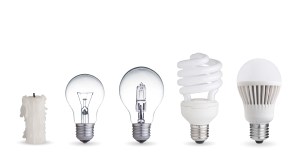What Is A Patent
Everybody has heard of a patent. If you’ve ever mentioned to someone that you had an amazing new invention that was sure to sell millions, undoubtedly someone has told you that you need to get a patent. But what really is a patent and will this patent protect you and your invention?
After all, creating the next great product would be an exercise in futility if you unveil your new invention, only to have it copied again and again by competing inventors and businesses. Without proper protection, anyone can reap the rewards of your novel product without cutting you in on your fair share of the profit. Even worse, the general public might not be able to tell your brand new invention from a knockoff which will invite even more copycats into the market while shrinking your piece of the pie.
So many intrepid entrepreneurs turn to a patent as a form of legal protection against copycats. A patent is a form of intellectual property protection that allows an individual inventor to register and protect the rights to a specific product, service, or proposed solution. So, you are well aware of the term patent and have a vague notion that it helps protect a new invention, but you’re not really sure how, what, and for how long you are protected. If you find yourself in this category, the answers you’re looking for are laid out below.

What is a Patent?
In its most basic form, a patent is an agreement between you and the government for your completely novel, new invention that nobody has ever seen before YOU introduced it to the world. In this agreement, you present your brilliant new idea in exacting detail with specific drawings and language so anyone in the industry can go ahead and make your new invention by simply reading YOUR patent. In exchange for providing the marketplace your blueprint on how to make your one of a kind, new invention, you are awarded exclusive rights to sell and profit from your invention for an agreed upon number of years. After those years are up, you agree to allow anyone to make and sell your invention.
That’s it in a nutshell … seems kind of simple right? Well, of course it would be if there weren’t nefarious companies and individuals that knowingly infringe on patents for the sake of profit without the patent holder’s consent. So, governments have had to get involved to define and enforce patent law. It gets especially tricky that each nation has their own set of rules and a patent is only enforceable in the nation is which it was granted.
According to the United States Patent and Trademark Office, a patent grants property right to an individual inventor responsible for an invention. The USPTO further expands on that definition with the following explanation:
“The right conferred by the patent grant is, in the language of the statute and of the grant itself, ‘the right to exclude others from making, using, offering for sale, or selling’ the invention in the United States or ‘importing” the invention into the United States.”
In general, a utility patent* issued in the United States lasts 20 years from the date of application. However, a U.S.-issued patent is only effective within the United States, its territories, and other U.S. possessions. (*- Utility Patents are the most type of patents.)
First To Invent
The United States, along with most of the rest of world, have in recent years moved to a “First To File” basis to establish priority. That simply means that the person who files a patent application meeting the standards required by the Patent Office has priority to the invention, provided that all subsequent steps are properly adhered to. Inventors are warned that relying upon a “Poor Man’s Patent” is worthless and provides no legal protection. Prior to March 16, 2013, the U.S. was a “First To Invent” country.
Evolution of the Patent
 The United States Patent and Trademark Office is hardly the first government or intellectual entity to offer a form of patent rights to individuals. It is assumed that such a service existed as early as the height of Ancient Greece’s power, but the first proven statutory system is regarded by most as the Venetian Patent Statute of 1450. These original patents worked much like modern day versions, with the issuance of a decree regarding new, inventive devices offering legal protection against potential infringements on that intellectual property.
The United States Patent and Trademark Office is hardly the first government or intellectual entity to offer a form of patent rights to individuals. It is assumed that such a service existed as early as the height of Ancient Greece’s power, but the first proven statutory system is regarded by most as the Venetian Patent Statute of 1450. These original patents worked much like modern day versions, with the issuance of a decree regarding new, inventive devices offering legal protection against potential infringements on that intellectual property.
In fact, most modern systems are in some way based upon the Venetian Patent Statute. Many of the early patents issued under this system covered glass making and lasted only 10 years. As Venetian people migrated around the globe, they sought to preserve current and future inventions through a similar system, providing the basis for other national patent systems.
England’s patent system was the first to recognize intellectual property, and did so as a means of stimulating invention. Offering patent protection to inventors spurred them forward in the pursuit of new inventions, products, and technological solutions that would eventually power the starts of the Industrial Revolution.
The English legal system is the foundation of many modern patent law in countries such as the United States, Australia, and New Zealand. The first patent law established in the United States required inventors to obtain patents from a petition filed with an individual colony’s legislature. The first patent issued in the U.S. was granted to Samuel Winslow in 1641, to whom the Massachusetts General Court issued a patent covering a new process for making salt. Samuel Hopkins was issued the first official U.S. patent on April 10, 1790 for his new method of producing potash, otherwise known as potassium carbonate.
Today, modern patent law in the United States hasn’t been changed much over the course of time. When the United States Constitution was written, it gave Congress the power to enact laws relating to patents. In Article I, Section 8, the Constitution reads “Congress shall have the power to promote the progress of science and useful arts, by securing for limited times to authors and inventors the exclusive right to their respective writings and discoveries.”
Patent law was originally established in 1790 in the U.S., and underwent its first general revision in 1952, and was codified as law in Title 35 of the U.S. Code. Additionally, Congress enacted the American Inventors Protection Act of 1999 on November 29, 1999, which further revised U.S. patent law. Patent law in the U.S. specifies the subject matter for patents and the conditions under which inventions can be patented. And most recently in March 2013, the America Invents Act became law with significant changes to the patent law. The most notable change was that the United States went from from “First To Invent” to “First To File.”
What Types of Patents Exist?
One of the most confusing aspects of a patent is the variety of options available. There are three types of patents issued in the United States, and each is chosen dependent upon the subject matter of the product, invention, service, or solution. These types of patents include:
- Utility Patents
- Provisional Patents
- Design Patents
- Plant Patents
Utility Patents
A utility patent is granted to any individual inventor who creates or discovers any new and useful process, machine, article of manufacture, or composition of matter. This also covers any new and/or useful improvement of existing products or services that fall under this definition. The issuance of utility patents varies by country.
For example, under United States patent law, utility patents are issued if an invention “provides some identifiable benefit and is capable of use.” Conversely, European patent law does not consider the utility of an invention as patentable, requiring instead that an invention must have industrial applications in order to qualify for a utility patent.
Provisional Patents
A provisional patent is not an actual patent, but rather an application to establish a First To File date when filed with the United States Patent Office. A provisional patent allows the inventor a maximum of year to perfect the invention and to file a proper utility patent application; otherwise, the application becomes abandoned. The invention becomes “patent pending” when the provisional patent application is filed. A provisional application includes a technical specification including whatever drawing(s) that may be needed to sufficiently understand the invention’s unique subject matter being sought. Unlike a utility patent application, the provisional application does not require formal patent claims, inventor’s oath and declaration, or information disclosure statement. The provisional application is date recorded and issued a reference number but is never examined and will not become an issued patent on its own. The provisional application can be referred to in a continuing utility patent application in order to gain the benefit of the early filing if the provisional sufficiently describes the invention according to the rules and regulations of the Patent Office. Many inventors abuse the provisional patent by not properly disclosing their invention according to patent law, or describing an “idea” that the would-be inventor cannot technically describe how to make and how to use.
Design Patents
A design patent is issued to anyone who invents a new, original, and ornamental design for an article of manufacture. For this particular patent, protection is offered only for the appearance of the particular invention, and does not cover its structural or functional features. Design patents filed on or after May 13, 2015 have a 15-year coverage period. Design Patents filed before that period had a 14-year coverage. Design patent applications cannot refer to a previously filed provisional patent application in order to gain any priority benefit.
Examples of design patents include ornamental designs for jewelry, beverage containers, furniture, or computer icons. A number of other countries, including Kenya, Japan, South Korea, and Hungary, issue industrial registered designs rather than a design patent.
Plant Patents
Perhaps the most unique patents offered by the US Patent and Trademark Office are plant patents. According to the USPTO, a plant patent “provides for the granting of a patent to anyone who has invented or discovered, and asexually reproduced, any distinct and new variety of plant, including cultivated sports, mutants, hybrids, and newly found seedlings, other than a tuber-propagated plant or a plant found in an uncultivated state.” A plant patent term is 20 years and covers the entire plant in the discovery, meaning that only one patent need be filed to protect the discovery as a whole.
How Do You Defend a Patent?

Obtaining a patent might give one a sense of security that their discovery, and investment in its protection, makes it safe. However, obtaining a patent is easy in many cases when compared with defending an infringement upon that patent. Although possessing a patent provides you with a strong starting point in defense of your invention, the process of defending the patent can be long and arduous.
If you find that a patent you hold has been infringed upon, you can launch a patent lawsuit by filing a complaint with the USPTO alleging patent infringement by another party. Remember, in no certain terms your patent is a government-awarded opportunity to hold a monopoly over an invention for a set period of time. It doesn’t give you the right to sell that product, but it does give you the right to exclude others from doing so.
There are two types of infringements that can occur, and they include literal and doctrine of equivalents infringements. Simply put, if another invention makes the exact same claims as your patented invention, there is a literal infringement of your patent because it is copying every claim of your patent.
A doctrine of equivalents means that the invention in question is similar enough to the claims of your patent that a court will likely find substantial similarities and determine an infringement has occurred. There are, however, limits to doctrine of equivalents infringement cases, which makes it important to find a good patent law attorney to take up your case and help you navigate the legal process for defending your patent.
Finding a Lawyer
Assuming you file a patent lawsuit and it goes to trial, only a lawyer may represent you during the legal proceedings. The United States Patent and Trademark Office maintains a list of registered patent agents and attorneys that you can use to find a good lawyer to defend your patent in a court of law. A patent agent cannot enforce your patent in court. A patent agent can, however, represent a party in an adversary proceeding before the USPTO, such as an inter partes review proceeding. It is important to remember that you are the only person who can enforce your patent. While the United States federal government and USPTO authorize patents, they do not enforce patents and are not on the lookout for infringement cases.
By working with a registered, qualified patent lawyer, you can determine the merits of your case, the existence of an infringement (literal or doctrine of equivalents). Given the complexity of the legal and scientific issues surrounding the defense of a patent in the legal system, you are best served teaming with an experienced patent lawyer.
The Process
Once you’ve launched a patent infringement lawsuit, you’ll quickly realize the value of hiring a good attorney to represent you in court. The accused infringer has a number of defenses available to them, and were you to represent yourself in court you’d spend months or years of your time showing up to court dates to defend your invention and patent.
Most accused patent infringers will begin with an attack on the requirements for a patent, which are subject matter, utility, novelty, non-obviousness, and prior disclosure. In the case of prior disclosure, most accusers will argue that a patent was “disclosed” a point in time prior to the application for a patent, meaning the accusers invention does not infringe upon the patent in question.
Another common tactic is to target the USPTO. Accuser will argue that the USPTO wrongly approved a patent application, and as a result the subsequent patent is invalid. If you want to successfully defend your patent in a court of law, you’ll have to prove the validity of your patent.
How Can You Make Money on a Patent?

If there is a flaw in the patent system in the US, and around the world, it is the fact that so many inventors spend countless hours and thousands of dollars seeking a patent to protect their idea without reaping any monetary reward for their efforts. In most cases, a patent ends up as a framed piece of paper that hangs proudly on the wall of an office. According to AllBusiness.com, nearly 97% of patents issued in the US never make any money for the individual inventor.
If an inventor wanted to, they could start a new company for the purpose of developing and marketing their patented invention. However, this approach is not typical because most inventors are creative individuals who would rather continue with the process of inventing new products, services, or solutions than spend their days running a business.
Instead, most inventors will approach another company to take over the development and marketing of an invention. This is a process known as licensing, and it creates a contract under which another company may produce and market an invention for a specified period of time. For as long as the license runs, the company must pay royalties on each sale or use of the invention to the patent owner.
A license can be granted by the patent holder (usually the inventor) to a licensee (usually a manufacturer) legally permitting the licensee to make and sell the invention in exchange for paying royalties to the inventor. There are a variety of ways in which this can occur. For example, a license may be exclusive to just one manufacturer or non-exclusive, meaning that a variety of companies can purchase the right to develop and market the same patented invention.
As the patent holder, the issuer can decide to license the patented information for the duration of the patent’s exclusivity or select a shorter period of time. Protection of the patent in a licensing agreement is typically limited to the geographic extent of the patent in question. For example, a US patent will license the manufacturer to produce the product in the US, but does not extend outside of the United States.
On top of that, it is possible for a licensee to make money off of a patent by sub-licensing the patent to other companies for the marketing or distribution of the invention. The extent to which the original inventor and patent holder benefits from this arrangement depends upon the specific terms of the agreement signed with the primary licensee.
Royalties paid to the patent holder are not always paid as a percentage of net revenues. As an inventor, you could sell all of the rights to the invention for a lump sum or royalties over time. This is known as assignment.
How are Patents Protected Internationally?

As mentioned earlier, a patent issued by the United States Patent and Trademark Office is only enforceable within the US, its territories, and other possessions of the US government. With that in mind, how can you be assured that your patent-protected invention won’t be replicated overseas in a cheaper market such as China or India?
The most straightforward approach to protecting your patent internationally is to file for patent protection in other countries. Nearly every country in the world has its own set of patent laws, and if you desire to protect your patent in certain markets or countries, you’ll have to file for patent protection in each of those individual jurisdictions in order to effectively protect your invention.
The USPTO does offer an Intellectual Property Rights (IPR) kit for those wishing to file for patent protection in different nations. Using this approach, US government officials in other countries such as Brazil, Croatia, China, Egypt, Korea, and the European Union nations will help you find contact information and individuals available to assist you in the process.
However, there are other options available to those patent seekers who want global protection for their new invention. Although the USPTO does not enforce patents or issue patents that extend beyond national boundaries, it does operate a number of different cooperatives designed to improve communication in the international community. The USPTO’s International Patent Cooperation office works on the following concepts:
- Collaborative Search Pilot Program: CSP works with the governments of Japan and South Korea to coordinate with the Japan Patent Office and Korean Intellectual Property Office.
- Cooperative Patent Classification: This effort forms a cooperative partnership between the United States Patent and Trademark Office and the European Patent Office to better align their existing classification systems (European Classification (ECLA) and United States Patent Classification (USPC) respectively) and migrate towards a common classification scheme.
- Global Dossier: Creates a centralized access point for patent holders and other applicants across the so-called IP5, the five largest patent offices in the world.
- Patent Prosecution Highway: This effort works to fast track the examination process for similar applications filed in any participating intellectual property office.
- International Patent Legal Administration: Per the USPTO, the IPLA “assists the patent community, develops policy, and resolves legal issues. The administration covers the Patent Cooperation Treaty (PCT), the Hague Agreement Concerning the International Registration of Industrial Designs, and the Patent Prosecution Highway (PPH).”
There is also the Patent Cooperation Treaty that exists to assist applicants seeking protection for inventions across international borders. The International Patent System, as it is known, helps patent offices across the world in granting patents, while facilitating public access to the vast array of technical information relating to new and existing, protected inventions. The PCT allows individual applicants to file for patent protection under the Patent Cooperation Treaty, and seek protection for an invention in one or all of 148 participating countries throughout the world.
While the PCT facilitates a significant portion of the patent application process, it is still the exclusive domain of national and regional patent offices to determine validity of an invention and either issue or deny a patent application. Patents facilitated by and issued through the PCT process are still territorially limited, meaning that a patent issued by the government in Paris is still restricted to France.
The goal of the PCT is not to assure individual applicants of successful patent applications, but rather, make it easier for an individual inventor to protect their intellectual property across regional and international boundaries without incurring immense cost and spending years following the process.
Summary
A patent is much more than a simple piece of paper that protects intellectual rights. A patent provides inventors with peace of mind that their invention is exclusively their property. While it does not provide a right to sell, produce, or otherwise distribute that invention, it does block others from doing so. However, patents do have limitations, both in time and scope. A patent issued in the US is just that, a US patent that is enforceable only within the United States of America.
The role of protecting patent falls squarely on the shoulders of the individual inventor. The US Patent and Trademark Office is happy to issue a patent, but does not take any role in ensuring the exclusivity of your patent. Further, if you want to ensure that your invention is protected across international boundaries you need to take the initiative and use some of the many collaborative organizations formed in recent years to file for patent protection in any and all countries where a competing, knock-off product is a possibility.
About the Author:
 Neil Montgomery is the Founder & CEO of For Sale By Inventor. As an award winning inventor, Neil brings his expertise to assist inventors to achieve their goal of researching, developing and selling their invention ideas.
Neil Montgomery is the Founder & CEO of For Sale By Inventor. As an award winning inventor, Neil brings his expertise to assist inventors to achieve their goal of researching, developing and selling their invention ideas.
You can find him here on LinkedIn and Google Plus.








